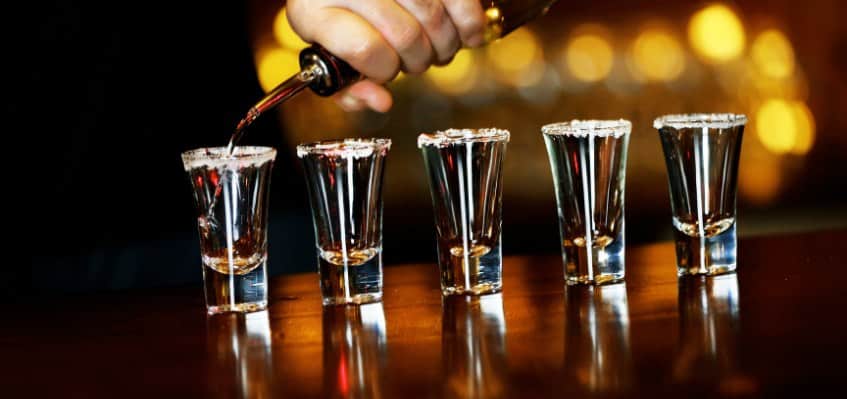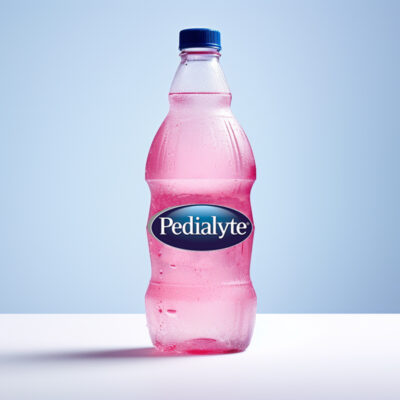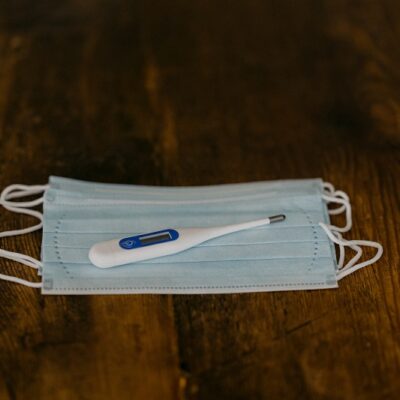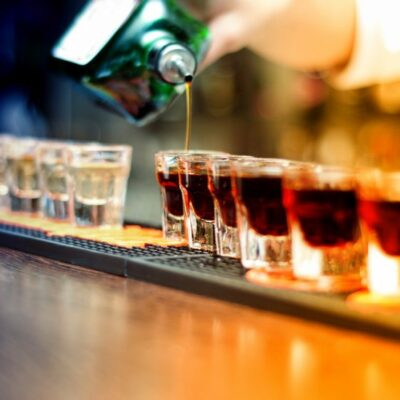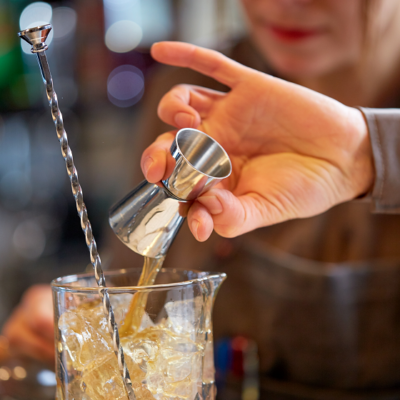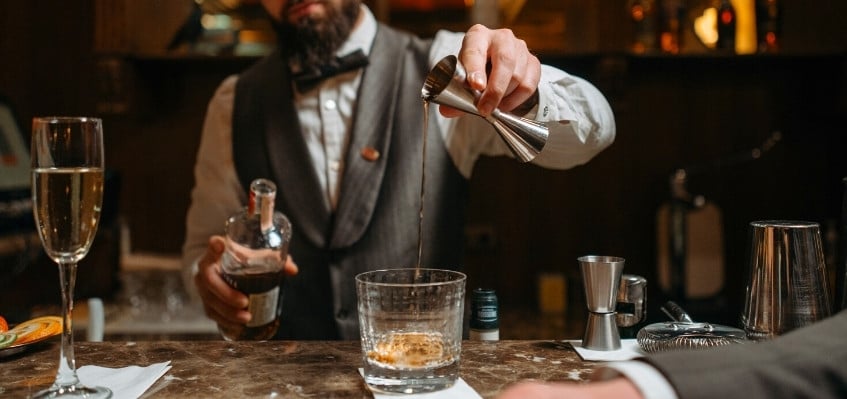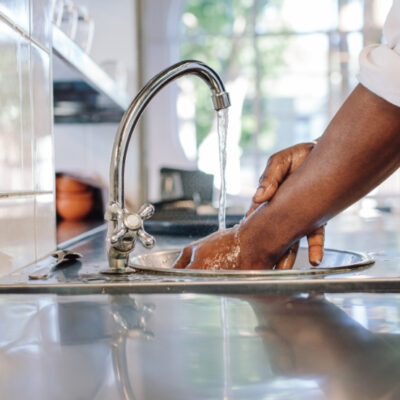When first entering the bartending world, you'll be greeted with quite a few new words or jargon (industry-specific terms). Some have become commonplace thanks to home bartending and the popularity of bartending as a profession. This article will explain bartending counts, why it's dangerous, and how you should measure drinks instead.
Bartending Counts Explained
Bartending counts is the concept that each pour can be counted out in the maker's head. It's also known as free pour. Bartending pour counts use one Mississippis as ½ an ounce. Doing this four times gets you to a 2-ounce shot of alcohol.
The bottle must be flipped up to at least a 90-degree angle and include some pour spout, most likely a standard. The standard pour spout is slightly curved with a rubber stopper that attaches to the bottle. There is also tapered and angled. There are even spouts that are marketed as pre "measured." The rate at which the alcohol passes through the pour spout is called the flow rate. It's also essential that you never impede the air hole.
Why is using the bartending pour count method dangerous?
While the count to four is recognized across the bartending community, it takes time to regulate. In a study conducted by MIT, they found that test subjects counted ten Mississippi for 11 seconds. Thus making the average Mississippi 1.77 seconds. So there is room for error.
As we mentioned before, pour spouts come in various shapes. So the length and diameter can vary from brand to brand. In addition, they can be built out of stainless steel, plastic, or even silicone. Each has a different surface tension causing liquids to travel at different speeds. Some have air tubes that help field the liquid into the spout and have metal balls or built-in air vents, while others do not.
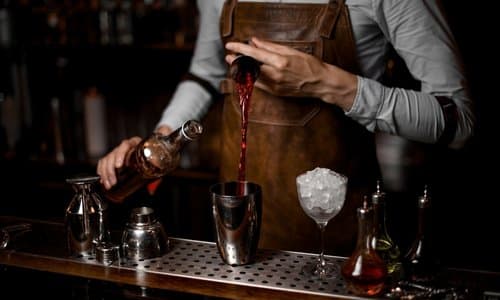
How should I measure drinks instead?
For the most accurate and safe way to measure alcohol, you should have jiggers readily available behind the bar. The standard measurement for a shot is 1.5 ounces of 80-proof alcohol! Which is the standard size for the larger end of a jigger. It's common to see them in stainless steel, and their accuracy supersedes pour spouts when tested. If you're unfamiliar with jiggers, check out our Behind the Bar Rail: Jigger article.
Save Money and Reduce Risk
Using one properly can lead to accurate measurements of liquor and decrease overpouring. You can have managers test your bartender’s pour to help reduce risk. It also helps ensure customers can safely return. By properly measuring your shots, you’ll be able to make sure your business is profitable by helping you consistently maintain profit margins. Improper pours can increase per-drink costs.
Are you looking to become a master bartender? Check out our Master Bartender Course that teaches you about bar setup and maintenance, bartending tools, mixology, drink preparation, an overview of alcohols, glassware, garnishes, and customer service focused on increasing your tips.

